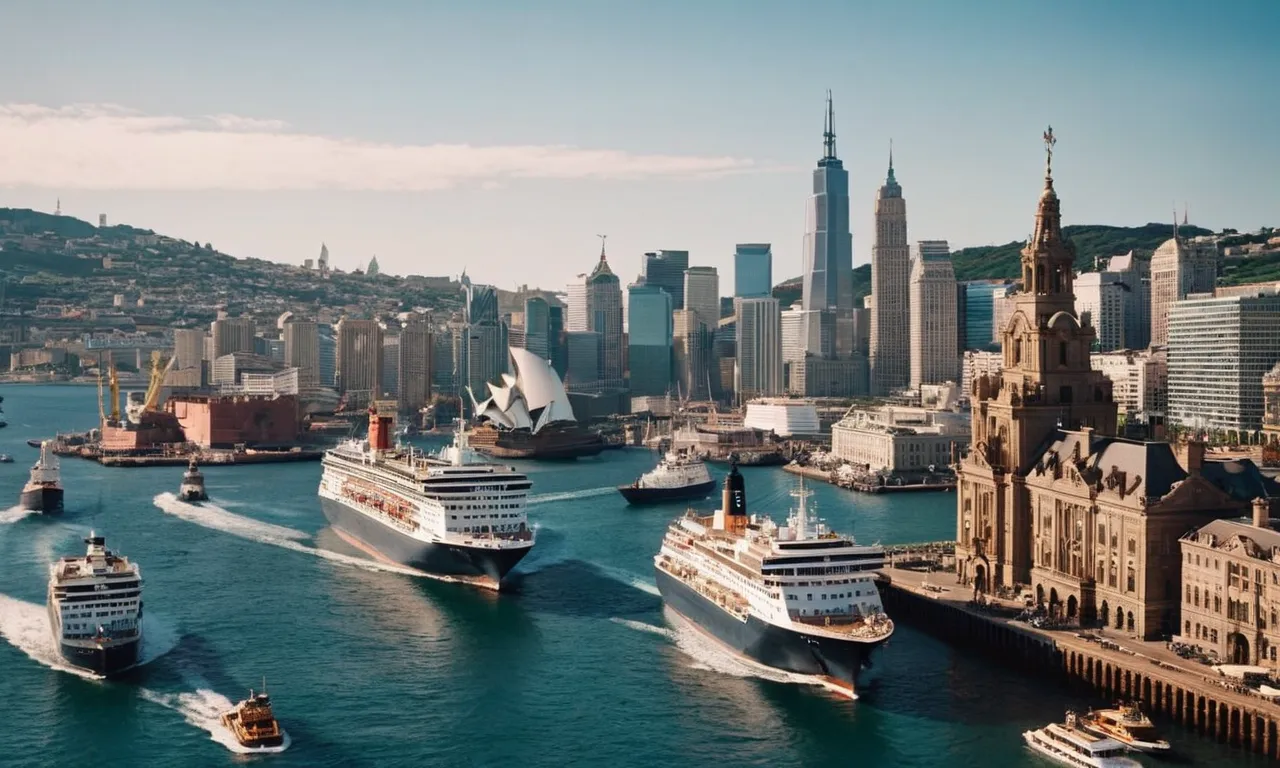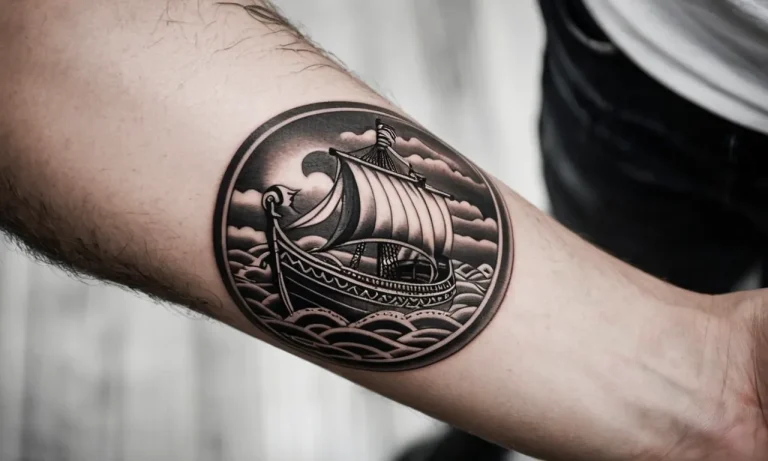What Is A Maritime Empire?
For centuries, seafaring nations have built formidable naval forces and used them to extend influence, protect trade routes, and conquer new territories. This practice of leveraging naval supremacy to establish control over coastal regions and strategic waterways is known as building a maritime empire.
If you’re short on time, here’s a quick answer: A maritime empire is a nation that uses its naval supremacy to control strategic maritime trade routes, influence coastal regions, and establish overseas colonies.
In this comprehensive guide, we will explore the key characteristics of maritime empires throughout history, how they rose to prominence, the strategic motivations behind their expansion, and how their legacy continues to shape geopolitics today.
Defining Maritime Empires
Naval Supremacy
A key component of maritime empires is their naval supremacy. This refers to their ability to exert power and control through their advanced navies and formidable fleets of ships. Maritime empires often have the most powerful navies of their time, enabling them to defend coastal territories, project power globally, and control strategic waterways and trade routes (Britannica).
For example, the British Royal Navy during the height of the British Empire was widely regarded as the most dominant navy globally. Its ships helped Britain control the Atlantic and Indian Oceans as well as territories across Asia, Africa and the Americas.
Overseas Colonies and Territories
Maritime empires establish colonies and territories across oceans and coasts outside of their homeland. These overseas territories and trading posts play a vital role in expanding their political and economic influence globally.
For instance, maritime empires like Portugal, Spain, Britain, and the Netherlands established colonies and forts throughout Asia, Africa and the Americas beginning in the 15th century (National Geographic).
These far-flung colonies enabled them to exert control over regional trade routes, obtain natural resources, and project power far from the empire’s capital.
Control of Strategic Waterways
A key strategy for maritime empires is controlling narrow straits, canals and chokepoints that are important for global transportation and trade. For example, the Dutch East India Company dominated lucrative spice trade routes stretching from Europe to Asia.
The company established bases in strategic spots like Cape Town, Malacca and Hormuz to project power across these trade chokepoints (Oxford Reference). Another example is the Panama Canal, which was seen as vital for trade and naval power projection.
The US gained full control of the canal in the early 1900s, cementing its status as a budding maritime empire.
Notable Maritime Empires Throughout History
Phoenicians
The Phoenicians were among the greatest traders and sailors in ancient times. Based in cities like Tyre, Sidon and Byblos along the eastern Mediterranean coast, they traveled far and wide in sturdy ships built from Lebanese cedar.
From around 1500 to 300 B.C., the Phoenicians created a vast trading network that extended to Italy, Greece, Egypt and more. They founded colonies across the Mediterranean, including the great city of Carthage.
Famous for their skill in shipbuilding and navigation, the Phoenicians also created the precursor to our modern alphabet.
Athens
Athens dominated the Aegean Sea in the 5th century B.C. under leaders like Themistocles and Cimon. With a large fleet of triremes, the Athenians formed the Delian League to counter the Persian threat. This naval alliance brought Aegean cities like Corinth, Chalcis and Eretria under Athenian sway.
After defeating the Persians at Salamis in 480 B.C., Athens used its sea power to control trade routes and extract tribute from League members. However, rivalry with Sparta and losses in the Peloponnesian War led to Athens’ decline by 404 B.C.
Carthage
Founded by Phoenician settlers, Carthage became the preeminent naval power in the western Mediterranean from the 6th-3rd centuries B.C. Phoenician ship designs and navigation techniques helped Carthage extend its maritime reach and establish new colonies in North Africa, Sardinia, Sicily and beyond.
During the Punic Wars with Rome, Carthage assembled massive fleets of quinqueremes manned by skilled crews and led by generals like Hamilcar Barca. Though ultimately defeated by the Romans, Carthage demonstrated the vital role sea power played in the ancient world.
Portuguese Empire
Spurred by Prince Henry the Navigator’s support of exploration, Portugal pioneered revolutionary sailing technologies in the 15th century. The caravel’s maneuverability and capacity for long voyages helped sailors like Bartolomeu Dias and Vasco da Gama reach India and Brazil.
With bases in Asia, Africa and South America, Portugal reaped enormous profits from the spice trade and precious metals. However, it couldn’t maintain its far-flung maritime empire against powers like the Dutch and British.
Still, Portugal’s Age of Discovery inaugurated a new epoch of European global expansion.
Spanish Empire
Building on Portugal’s accomplishments, Spain established a huge overseas empire thanks to the ambitious exploits of explorers like Christopher Columbus, Juan Ponce de Leon and Vasco Nunez de Balboa. Flows of New World gold and silver enriched Spain for a time.
But skirmishes with French, Dutch and English fleets took a toll on Spanish maritime dominance. Spain also struggled to defend its trade convoys and colonial holdings from raids by proficient sailors like Sir Francis Drake.
Nevertheless, the prodigious Spanish fleets of the 16th and 17th centuries reflect the indispensability of sea power.
Dutch Empire
The Dutch East India Company, chartered in 1602, exemplifies the Netherlands’ maritime prowess in the 17th century. Armed merchant ships like the galleon Batavia protected company cargos while conducting trade and conquest from the Cape of Good Hope to Japan.
With experts like explorer Abel Tasman and admiral Michiel de Ruyter, the Dutch skillfully combined commerce and naval warfare. Sectarian unrest and ongoing wars with Britain drained Dutch resources in the 18th century.
But Amsterdam’s golden age still evokes the vast potential of maritime enterprise.
British Empire
Britannia ruled the waves for much of the 18th and 19th centuries. Advanced warships like the HMS Victory and HMS Warrior established British dominance in battles like Trafalgar. Explorers like James Cook charted the Pacific while the East India Company drove imperial expansion.
Networked trade routes and strategic chokepoints like Gibraltar further enabled Britain’s navy to project global power. As Royal Navy ships steamed from colony to colony, Britannia’s far-flung empire was the largest maritime domain in history.
Its extraordinary breadth and influence make it the archetypal maritime empire.
Key Motivations Behind Building Maritime Empires
Economic and Trade Interests
Maritime empires were often motivated by economic and trade interests. Many wanted to establish profitable trading routes and gain access to foreign markets. This allowed them to acquire valuable commodities like spices, silk, sugar, tea, and precious metals. Some key economic motivations included:
- Generating wealth through international trade and extracting resources from colonies.
- Securing key trading routes and strategic bases to protect commercial interests.
- Establishing trade monopolies by taking control of major seaports and trade routes.
- Gaining access to cheap labor and agricultural lands to produce cash crops.
For example, the Portuguese sought direct ocean trade routes to Asia to bypass Italian and Arab middlemen. The Dutch established the Dutch East India Company to dominate the lucrative spice trade. The British expanded trade within their empire to acquire raw materials and new markets for manufactured goods.
Military and Security Priorities
Maritime powers also built empires for military and security reasons. Their goals included:
- Projecting naval supremacy and political influence overseas.
- Protecting national interests by controlling strategically important bases and sea lanes.
- Pre-empting rivals from threatening their security by controlling ports and chokepoints.
- Having coaling stations to supply and repair naval fleets operating globally.
For instance, the Spanish expanded their empire to protect the vital Manila Galleon trade route between Acapulco and Manila. The Japanese competed with Russia for control of ports like Port Arthur in northeast China.
Great Britain acquired bases like Malta, Gibraltar, and Suez to protect trade routes to India.
National Prestige
Finally, maritime empires also enhanced national prestige and power. Key motivations were:
- Projecting global influence by controlling distant colonies and subjects.
- Gaining international recognition and enhancing the nation’s reputation.
- Spreading cultural influence and the empire’s way of life to new territories.
- Competing successfully against other European powers for glory and status.
The ability to operate naval fleets globally was itself a source of national pride and patriotic sentiment. For example, Portugal’s leaders proudly proclaimed that the “Sun never set on the Portuguese Empire.” The Spanish derived great prestige from possessing vast territories in the Americas.
Maritime supremacy became tied to national identity and destiny.
Legacy and Impact on Modern Geopolitics
Reshaped Global Trade and Commerce
Maritime empires like the British and Dutch East India companies fundamentally transformed global trade and commerce. They established vast trade networks that connected Europe, Asia, Africa and the Americas.
This enabled the massive exchange of goods, resources, people and ideas on an unprecedented scale. Spices, textiles, precious metals, slaves and many other commodities were traded across oceans. Industrialization and capitalism expanded rapidly.
The empires introduced capitalist economic policies and business practices that linger today. Multinational corporations emerged from these colonial enterprises.
The maritime powers reshaped global commerce to their advantage by exploiting colonized lands and peoples. The empires engaged in exploitative trade practices like monopolies that enriched the colonizing countries.
The slave trade displaced over 12 million Africans to support plantation economies in the Americas. This massive exploitation of land and labor fueled the growth of seaborne empires but also caused great human suffering.
Transformed Demographics and Cultures
Maritime colonialism caused sweeping demographic and cultural changes around the world. Settlement colonies like the Americas, Australia and New Zealand saw millions of Europeans migrate permanently. This displaced and marginalized Indigenous populations through violence, disease and loss of land.
It also created racially diverse colonial societies built on European domination.
In Africa, Asia and the Pacific, European traders and missionaries spread their languages, religions and customs. Christianity and English became globally dominant through British colonialism. Traditional social structures and belief systems were disrupted or replaced.
The cultural legacy is evident in the widespread use of European languages, religions and institutions in former colonies today.
Redrew Political Borders
Imperial expansion allowed maritime powers to militarily conquer vast territories and redraw political boundaries for colonial rule. The Spanish seized control of Central and South America, while the British built a dominion spanning Australia to the Caribbean.
Imperial borders were often arbitrarily drawn, splitting ethnic groups and ignoring local affiliations. This caused long-term instability and conflict in many regions.
The collapse of seaborne empires prompted nationalist movements and a surge of new countries in the 20th century. But arbitrary colonial borders remained, resulting in border disputes and internal discord plaguing many post-colonial states.
The geopolitical turmoil in the Middle East and Africa partially stems from borders imposed by former maritime powers.
Conclusion
Maritime empires have played a pivotal role in shaping the modern world, leaving an enduring impact on global economics, politics, demographics, and culture. While their heyday may have passed, the strategic maritime chokepoints and trade routes they fought to control continue to be critical flashpoints in 21st century geopolitics.
With its comprehensive overview of what constitutes a maritime empire, examination of notable historical examples, analysis of their key motivations, and summary of their far-reaching legacy, this guide provides invaluable context for understanding these unique and influential polities that ruled the waves.








